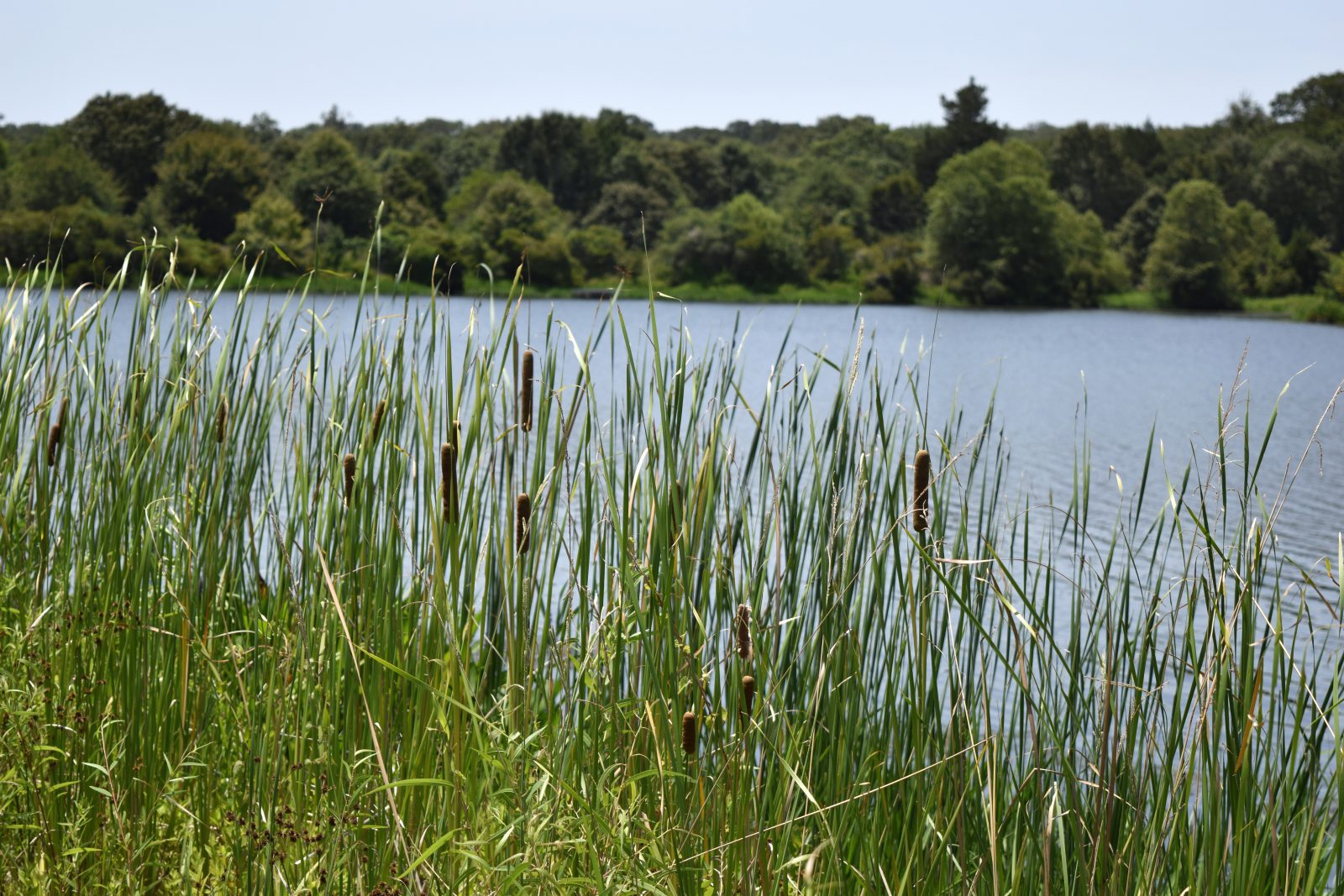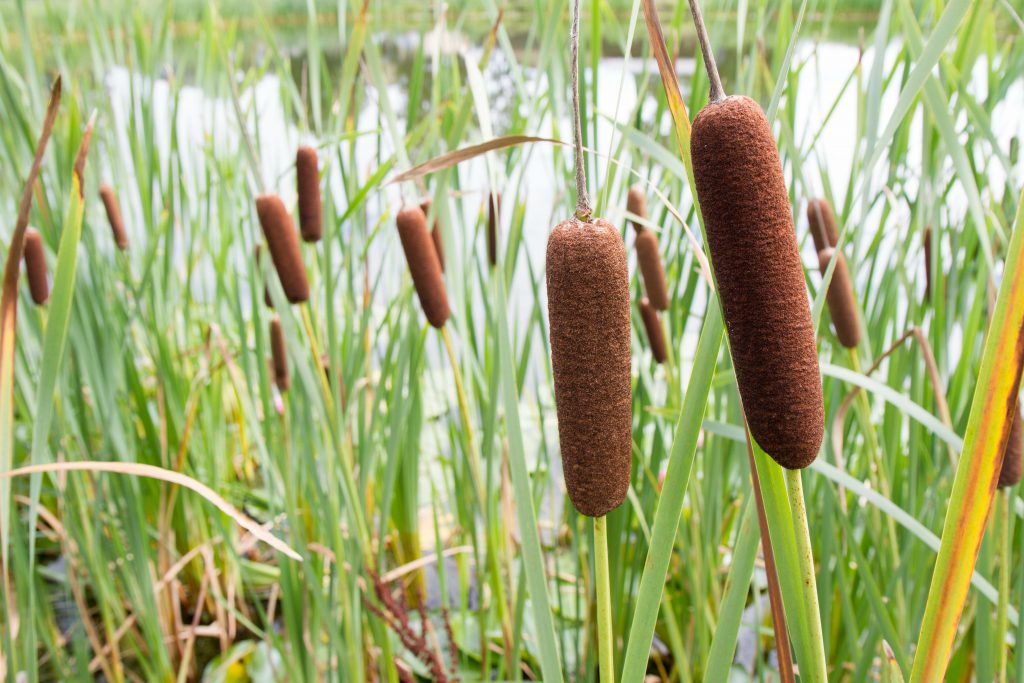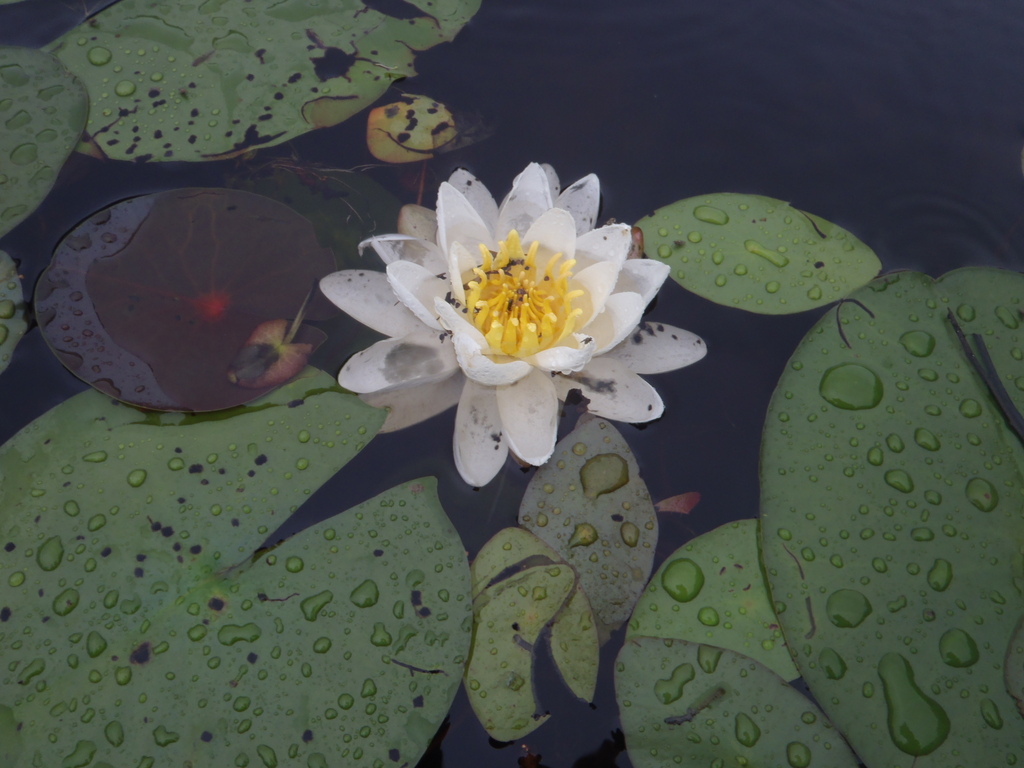

Cattails and Lily Pads: Love Them or Hate Them?
Written by Industry Expert, Trent Nelson, Aquatic Specialist
There has been a long debate concerning cattails and lily pads in the world of lake and pond management. Some view these species as integral parts of the natural landscape, producing wonderful flowers and seed heads that paint the perfect picture of a wetland or small waterbody. However, others view cattails and lily pads as noxious aquatic weeds that can take over a waterbody, reducing the intended uses for these systems. When comparing the two plants and trying to decide if they are welcome in the landscape, it is important to remember the definition of what constitutes a “weed.” A “weed” is a plant that is considered undesirable in a particular place; simply put, a plant out of place.
There are about 30 species of cattails in the Typha genus that are typically found in the Northern Hemisphere in a multitude of wetland sites. Cattails typically grow in shallow water areas and are monoecious (having both male and female flowers on the same plant). Portions of the plant are edible including the rhizomes, outer portions of immature plants, as well as the seeds that have been used in some settings to feed cattle and chickens.
Cattails and their different plant parts were also used for floatation devices during WWII. Cattails can also be used to create ethanol, a biofuel that can power motorized vehicles and machinery and ultimately reduce greenhouse gas emissions. When cattails are growing in aquatic sites, they create habitat for fish and aquatic invertebrates, as well as birds and mammals that use the dense cover to hide from predators and as a food source. Muskrats and beavers use cattails to construct their dens and will feed on the fibrous plants.
Cattails that are found in a controlled setting, such as a small ornamental pond, stormwater pond, or even larger ponds or lakes that are intensively managed seem to quickly become plants out of place, or a weed, even though they are native to our area. Cattails have an aggressive growth rate and can quickly dominate an aquatic system by outcompeting beneficial plants resulting in a pondscape dominated by a single plant, otherwise known as a monoculture.
Cattails thrive in shallow water sites reducing water movement and creating stagnant areas in and around the cattail masses that are perfect breeding grounds for mosquitoes. Cattails can also reduce the amount of sheet flow entering a stormwater system and potentially reduce the functionality of the system.

Lily pads are one of the most recognized plants in lakes and ponds in the United States. The American white water lily (nymphaea odorataa aiton), is the more common of the Nymphaea genus, and has a fragrant white flower. There are over 35 different species of water lilies in the Nymphaea genus with most found in all types of slow moving aquatic ecosystems. Like cattails, water lilies are perennial plants with large rhizomatous root systems. Water lilies can often be found in ornamental pond settings due to their vibrant flowers that bloom during warmer months when they are actively growing. Several different water lilies have been hybridized by the horticultural industry, showcasing different colors of flowers, as well as plants that bloom at night not just the day.
Like the cattail, water lilies that are left to grow with little competition from other plants or grown in areas for their aesthetic value can ultimately dominate the landscape and prevent waterwaysfrom being utilized to their fullest potential. Lilies can impede flow as well as entangle boat propellers creating access and recreational issues. Some types of exotic water lilies that are introduced to an area can out-compete native plants, leaving vast areas of noxious aquatic ”weeds” that ultimately may require large scale chemical and/or mechanical removal to reduce its adverse impact to the waterbody.
They say that “beauty is in the eye of the beholder” and this can be true when you compare cattails and native water lilies. While both provide habitat for fish and animals as well as potentially adding aesthetic value to a property, when introduced into the wrong environment or left unmanaged, these species of aquatic plants can quickly dominate an ecosystem creating a monoculture. While suggesting total eradication of either plant is not considered a best management practice, a management plan to keep cattails and water lilies at desirable levels that does not inhibit the use, functionality, or aesthetics of the waterbody may be the best plan of action for both sides of the debate.
SOLitude Lake Management is an environmental firm committed to providing full-service solutions that improve water quality, preserve natural resources, and reduce our environmental footprint. Our services include lake, pond, wetland and fisheries management programs, algae and aquatic weed control, mechanical harvesting, hydro-raking, installation and maintenance of fountains and aeration systems, water quality testing and restoration, bathymetry, lake vegetation studies, biological assessments, habitat assessments, invasive species management and nuisance wildlife management. Services, consulting and aquatic products are available to clients nationwide, including homeowners associations, multi-family and apartment communities, golf courses, commercial developments, ranches, private landowners, reservoirs, recreational and public lakes, municipalities, parks, and state and federal agencies. Learn more about SOLitude Lake Management and purchase products at www.solitudelakemanagement.com.









